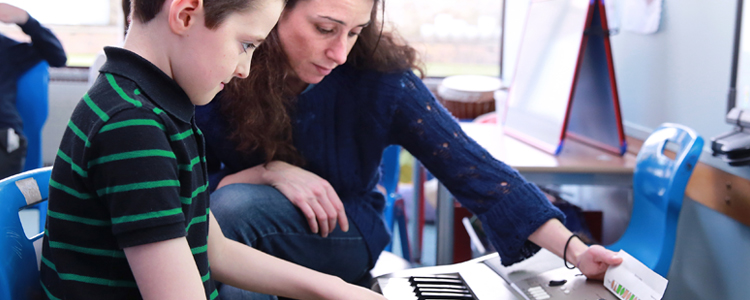
This page is designed to help you understand what creative learning is and how you can embed it into your work and organisation.
What do we mean by creative learning?
The term creative learning covers lifelong learning and applies to a range of settings – anywhere where learning takes place – in and out of formal education.
All cultural activity has the capacity to inspire learning by its very nature. Artistic experiences can challenge and influence how we respond to the world in reflective and imaginative ways. Creative learning has huge benefits for individuals and society in terms of wellbeing, employability and skills development.
We are committed to increasing the quantity and quality of opportunities for everyone to develop their full potential though the arts and creativity. We encourage organisations to clarify and develop the reach, relevance and power of learning opportunities they plan and deliver within and outwith, their organisations.
Our definition of Creative Learning is as follows:
In the context of Creative Scotland’s remit across the arts, screen and creative industries, creative learning takes place when arts and cultural activity leads intentionally to the development of understanding, knowledge and skills.
This definition includes;
Learning in an artform; developing the attributes, skills and techniques that will lead to increased mastery of that artform
Learning through an artform; using the attributes, skills and techniques of an artform to engage and develop learners, primarily in another subject area
Creative Learning; developing the creativity skills of learners (open minded, constructively inquisitive, able to harness imagination, able to identify and solve problems) and developing creative approaches to learning
Further clarification on the scope and characteristics of creative learning can be found in the Creative Learning Review however some key points are;
- The word ‘intentionally’ refers to the intention of the commissioner or establisher of the project. In a creative learning context it is likely that participants will have some involvement in defining the intention. Creative Scotland understands and agrees that unintentional outcomes of engaging with arts and cultural activity are frequent, if not inevitable, powerful and exciting.
However, in the context of public funding and for the development of understanding creative learning and being able to evidence the impact, we are particularly interested in the learning outcomes that are planned and the impact they have. In addition, Creative Scotland welcomes reports and evidence of unintentional outcomes.
- The reference to understanding, knowledge and skills is deliberately broad. Skills in an artform, creativity skills or personal development (softer) skills are equally important. It is for the organisation or practitioner to identify what they are intending to develop.
Outcomes for Creative Learning and what this looks like in practice
This section outlines the outcomes which Creative Scotland seeks to achieve for Creative Learning and some questions to help you think about your organisation and practice and what other actions you might need to take to ensure that Creative Learning is embedded across your work and organisation.
- Excellence and experimentation in creative learning across the arts, screen and creative industries is understood, valued and developed.
- Can you evidence a considered approach to and articulation of how you understand and value creative learning?
- Does your organisation reflect how you value creative learning through your ambitions, governance, budgets, programme and delivery?
- Can you create opportunities to develop excellence and experimentation in the context of creative learning within your organisation and/or through the programmes or work that you deliver? For example; do you plan to develop more experimental approaches to delivering creative learning activity? Do you plan to provide opportunities for participants or staff to develop skills in an art form?
- How do you plan to gather evidence of the impact of your creative learning work and learn from it?
- Everyone in Scotland has the opportunity to experience high quality arts and creative learning
- Are you clear about the rationale for the extent of the reach and depth of your creative learning activities? Creative Scotland recognises that there is a ladder of progression that begins with providing access to activities, performances, exhibitions and events, through participation and engagement to recognition of achievement and further learning. Creative learning and the development of understanding, knowledge and skills can happen at each of these stages. Each step is necessary and important. We recognise and value the fact that some projects/programmes may provide every step of the journey, others may be focussed on specific stages.
- Do you plan to work with specific target groups and why? What partnerships do you have in place/ plan to develop, to ensure you achieve this?
- Places and quality of life are transformed through the reach and application of creative learning
- Do you work with local or national partners with aligned outcomes to your own? For example; Creative Learning Networks, local authorities, charities, Creative Scotland targeted funded programmes, youth organisations, youth arts hubs, schools, colleges, adult or community learning programmes or public sector organisations with a focus on Justice or Health.
- There is a workforce skilled in the leadership and delivery of creative learning and the leadership and workforce across the arts, screen and creative industries has the opportunity to share and develop their practice and expertise in and through creative learning.
- How do you plan to provide professional development opportunities for practitioners to develop their understanding, knowledge and skills in delivering creative learning?
- How do you plan to provide opportunities for staff to develop their artistic and creative skills?
- Creative learning approaches and developments are showcased and shared internationally.
- Do you have, or plan to develop, international connections in the context of creative learning?
Useful resources
